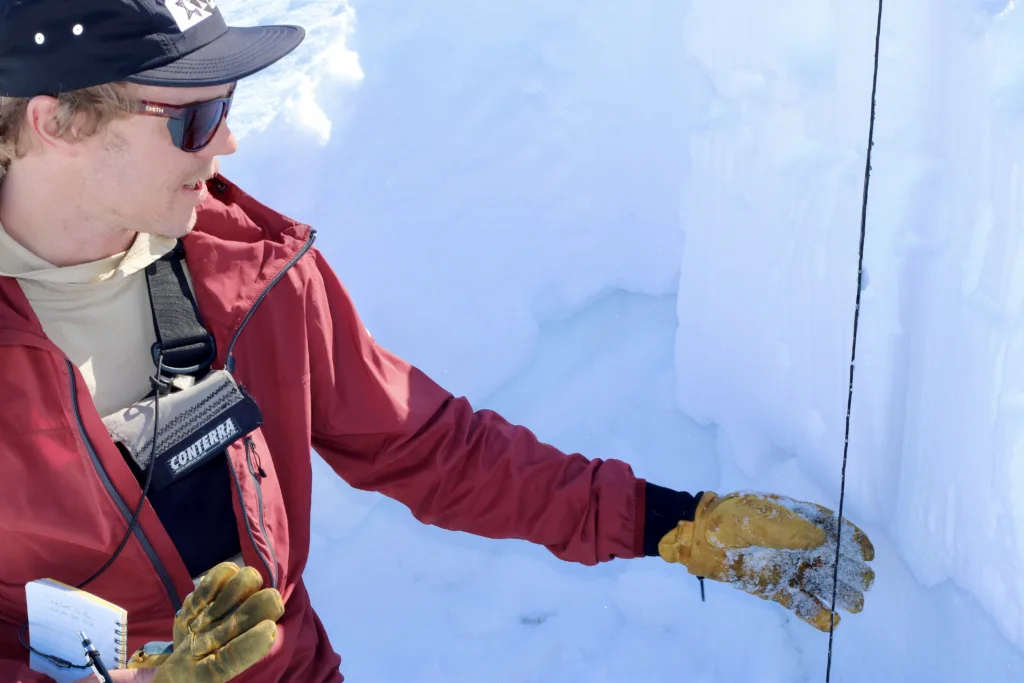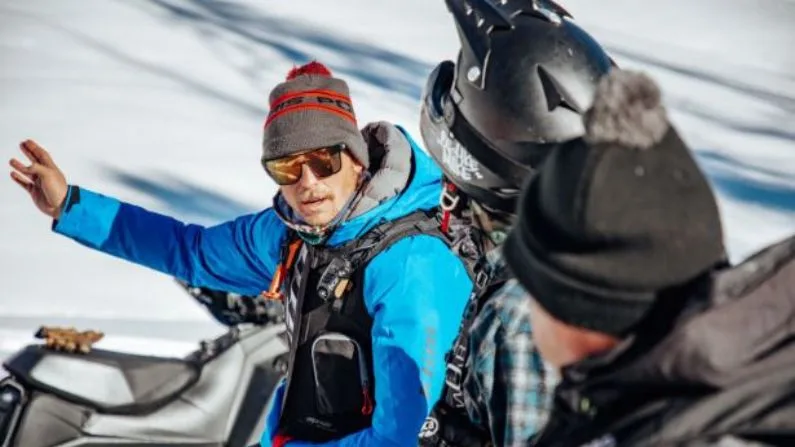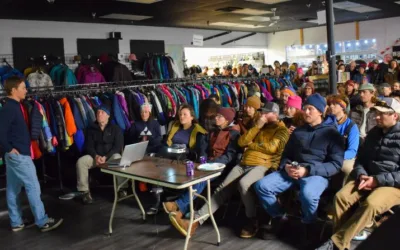With seemingly endless couloirs to ski and miles of often untouched powder, the Tetons draw backcountry enthusiasts from across the world.
But, they’re not the only popular range in the region. The Big Holes and other mountains across the border in Idaho draw skiers and snowboarders, and also snowmobilers.
But, according to new reporting, there’s not as many resources over there as in the Tetons on how to stay safe. The area lacks a dedicated avalanche forecasting center, and there’s often still a lack of awareness among snowmobilers.
Experts have estimated that 11 avalanche deaths have happened in the eastern and southeastern part of the Gem State in recent years — many of them riding sleds.
In a story published by Boise State Public Radio and High Country News, reporter Rachel Cohen dove into what she described as a “donut hole of unknown danger, where lack of information is costing lives.”
She sat down with KHOL to talk about that gap, and what’s being done to fill it.
RACHEL COHEN: There’s no avalanche forecast center that’s exclusively dedicated to assessing hazards in the snow and communicating them with the public in this area. There are four avalanche centers that surround this area. There’s, you know, the Bridger-Teton in Wyoming. There’s the Gallatin National Forest Avalanche Center in Montana, the Utah Avalanche Center and the Sawtooth Avalanche Center in Idaho.
And three out of the four of these do have some forecasted areas that go into the mountains in eastern Idaho. But there are also mountain ranges that are quite popular for recreation that are outside of those zones.
HANNA MERZBACH/KHOL: So, one problem is the lack of a forecast center. And I know another one is more awareness. Some of these people who died in recent years weren’t wearing beacons or didn’t have their beacons turned on.
You went out on an avalanche course for snowmobilers in Driggs. It sounds like maybe this awareness problem could be changing a little bit.
COHEN: There definitely are more ad hoc education initiatives going on in eastern Idaho and people that are taking initiative to help others learn more about the risks of avalanches. This training that I attended was run by the Mountain Riding Lab. So at this avalanche training, it was all snowmobilers. Some of them were local. Some of them were from out of state, like the Midwest.
If you’ve taken an avalanche course for skiing, it’s pretty similar. In the morning before they go out into the field, they talk about the avalanche hazards and they talk about the weather forecast and they talk about the snow.
But, when they’re in the field, they’re also talking about things that are more specialized for snowmobilers and just how a snowmobile would move through the mountains from one spot to the other and how they would seek out safe terrain. But, there’s still a gap between the amount of resources and education that’s tailored for skiers, for example, compared to snowmobilers.

Ethan Davis, with the Sawtooth Avalanche Center, assesses the snowpack in eastern Idaho. (Rachel Cohen/Boise State Public Radio)
KHOL: The trainings can definitely go a long way. I know from doing like my AV1 skiing training, one of the first things they taught us was to always be looking at that Bridger-Teton Avalanche Center forecast in the morning before you go out. Obviously, you’re making your own decisions and like assessing conditions when you’re out there, but that forecast for me as a skier is always a foundation. And these folks over in Idaho still just don’t really have that same resource, if you’re going into the Big Holes, for example.
What’s being done to address that gap?
COHEN: I know that there has been some movement to increase the amount of community observations in mountain ranges like this, and in places that don’t necessarily have a daily forecast. And community observations can be helpful because, you know, maybe someone spotted an avalanche one day and you can use that to make an informed decision.
Of course, it’s not quite the same as having an expert go out there into the field every week. And so the challenge is that, for areas like this that don’t have daily forecasts, finding the resources to expand the amount of people who can go out there on the ground is difficult. I spoke with Simon Trautman from the National Avalanche Center and he said, essentially we know what to do for areas like this. We know that we need more education, and we know that we need more localized avalanche forecasting information. The question is how to make that possible and how to make it happen.
KHOL: What should we look out for next?
COHEN: There is a working group of the neighboring avalanche centers. They’re trying to come up with solutions for this area. I think eventually they would love to have a forecaster who’s based on the ground there. Maybe they work for one of the local avalanche centers.
But they said that, whatever solution they propose, it will probably need to come with some sort of fundraising component. And the question is, who’s in charge of that? Is it one of the affiliated nonprofits of the Idaho center? Is it the nonprofit that’s associated with the Bridger-Teton center? That’s one of the questions that’s up in the air.





